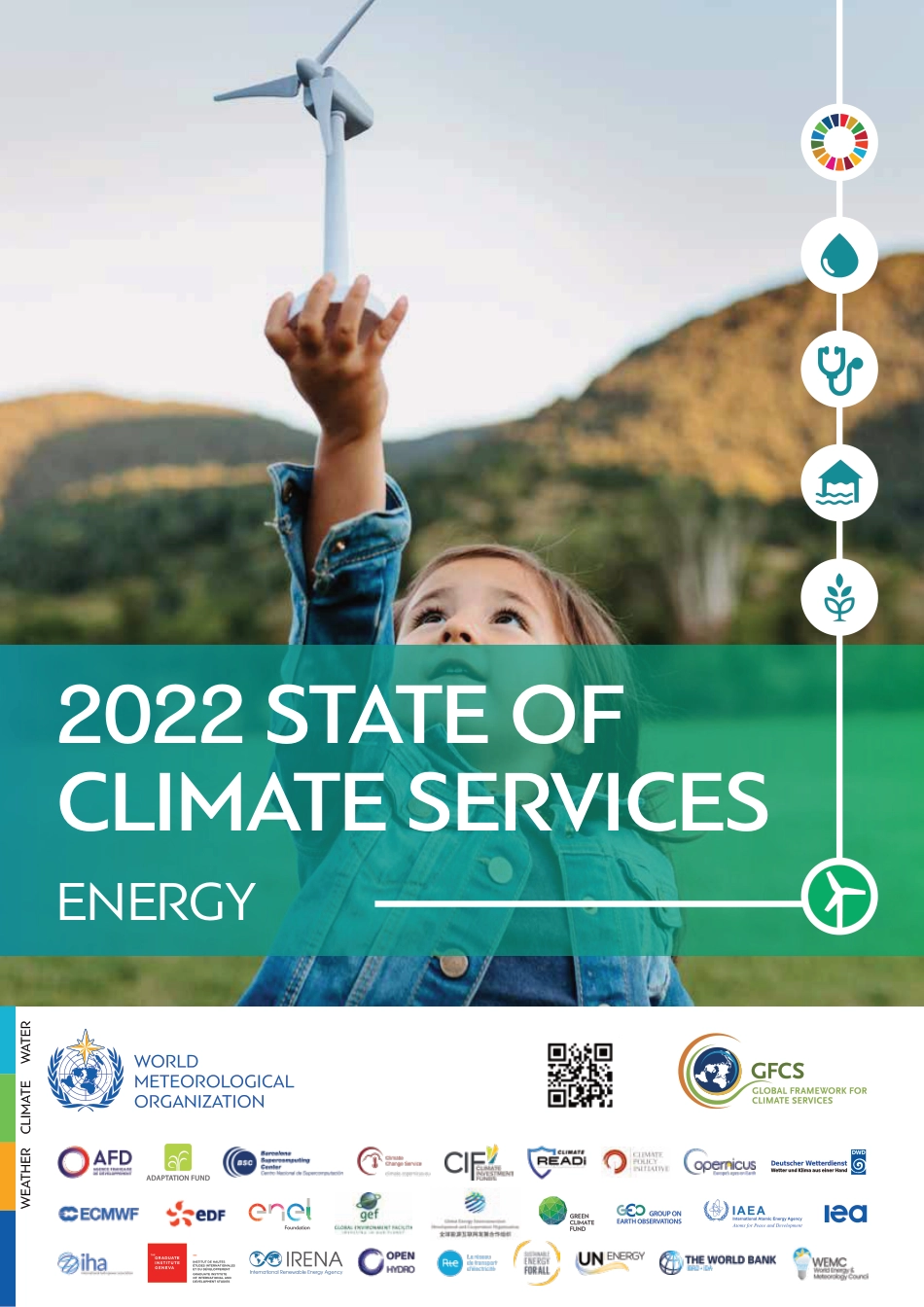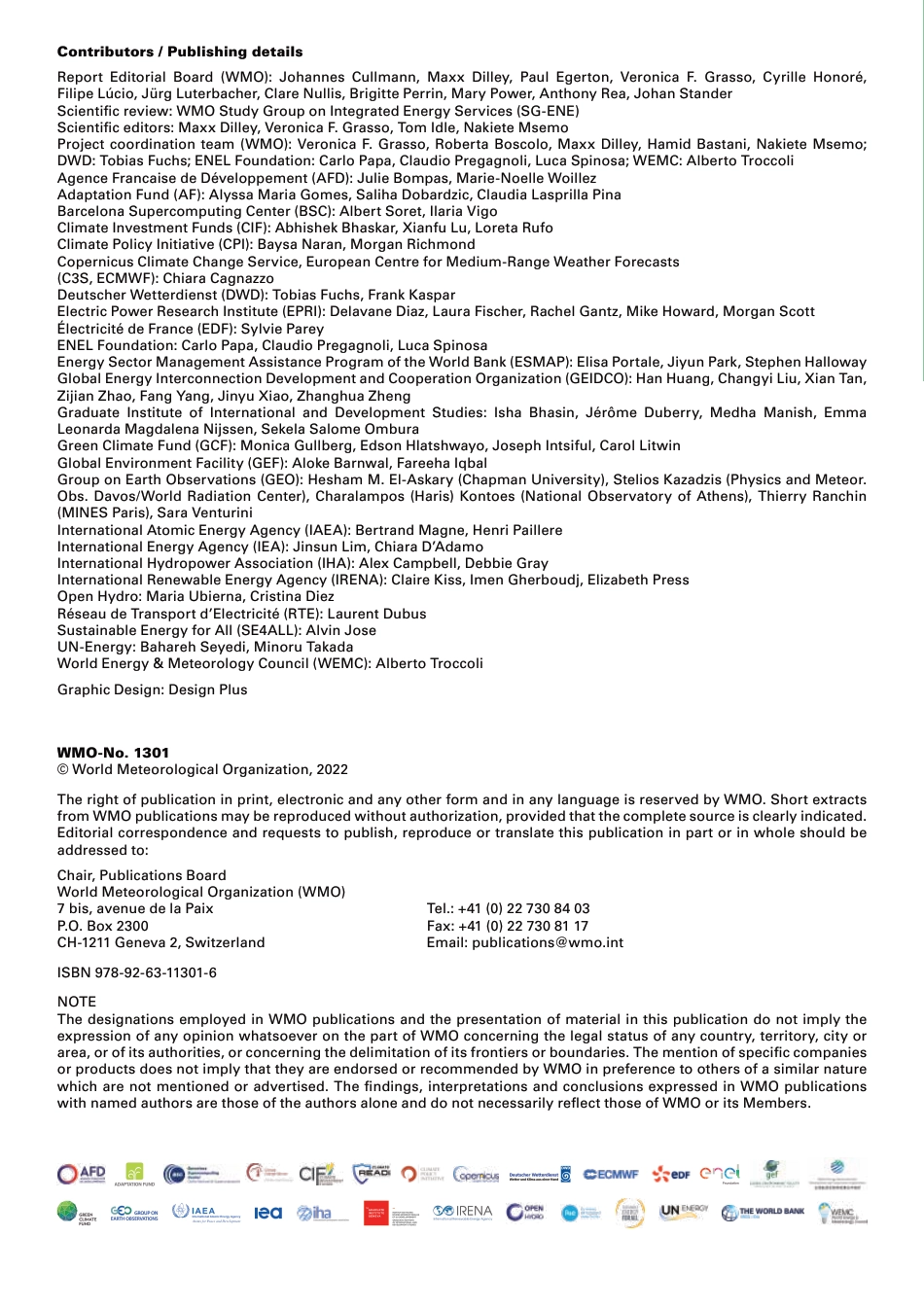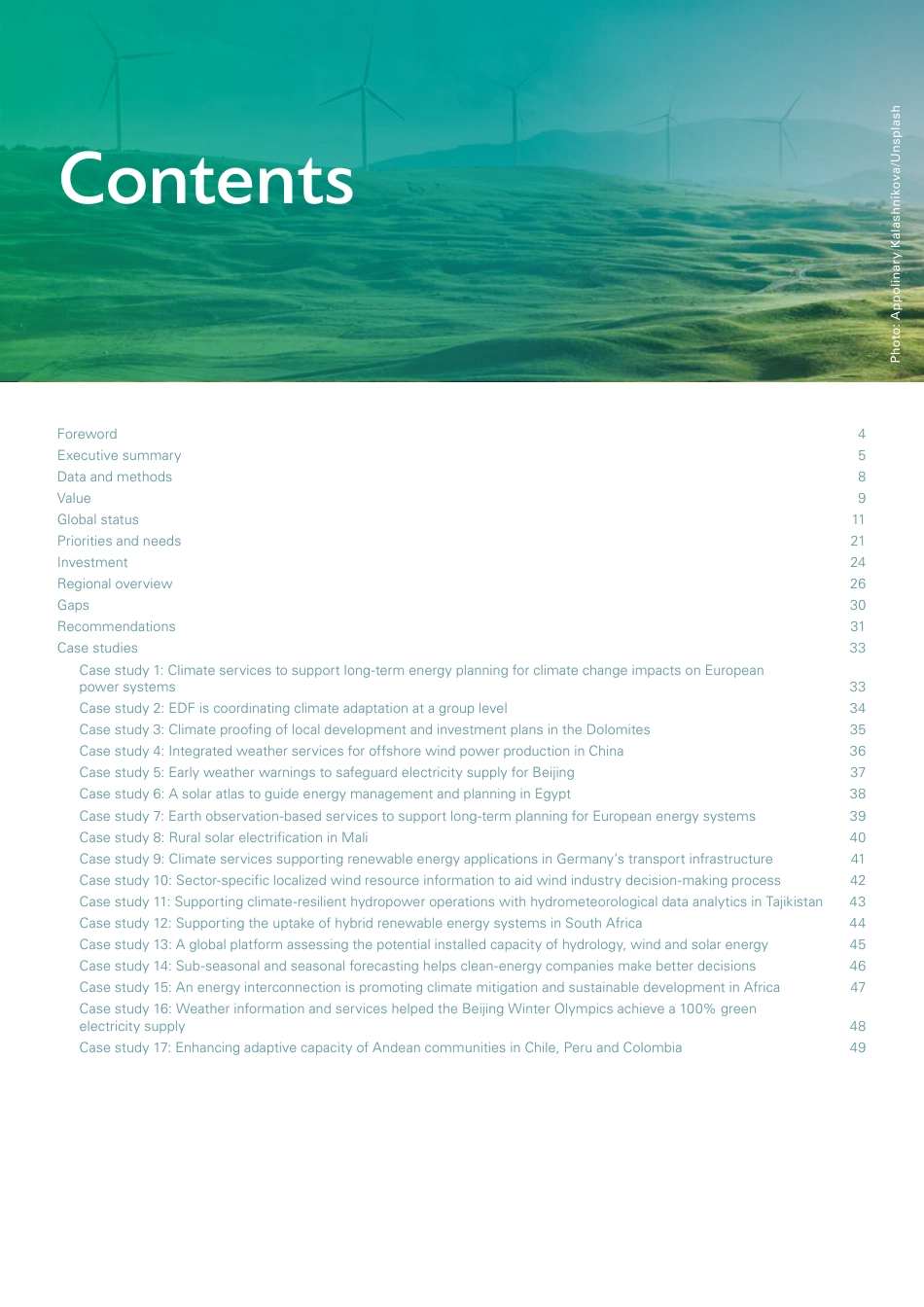2022 STATE OF CLIMATE SERVICESENERGYContributors / Publishing detailsReport Editorial Board (WMO): Johannes Cullmann, Maxx Dilley, Paul Egerton, Veronica F. Grasso, Cyrille Honoré, Filipe Lúcio, Jürg Luterbacher, Clare Nullis, Brigitte Perrin, Mary Power, Anthony Rea, Johan StanderScientific review: WMO Study Group on Integrated Energy Services (SG-ENE)Scientific editors: Maxx Dilley, Veronica F. Grasso, Tom Idle, Nakiete MsemoProject coordination team (WMO): Veronica F. Grasso, Roberta Boscolo, Maxx Dilley, Hamid Bastani, Nakiete Msemo; DWD: Tobias Fuchs; ENEL Foundation: Carlo Papa, Claudio Pregagnoli, Luca Spinosa; WEMC: Alberto TroccoliAgence Francaise de Développement (AFD): Julie Bompas, Marie-Noelle WoillezAdaptation Fund (AF): Alyssa Maria Gomes, Saliha Dobardzic, Claudia Lasprilla PinaBarcelona Supercomputing Center (BSC): Albert Soret, Ilaria VigoClimate Investment Funds (CIF): Abhishek Bhaskar, Xianfu Lu, Loreta RufoClimate Policy Initiative (CPI): Baysa Naran, Morgan RichmondCopernicus Climate Change Service, European Centre for Medium-Range Weather Forecasts(C3S, ECMWF): Chiara CagnazzoDeutscher Wetterdienst (DWD): Tobias Fuchs, Frank KasparElectric Power Research Institute (EPRI): Delavane Diaz, Laura Fischer, Rachel Gantz, Mike Howard, Morgan ScottÉlectricité de France (EDF): Sylvie PareyENEL Foundation: Carlo Papa, Claudio Pregagnoli, Luca SpinosaEnergy Sector Management Assistance Program of the World Bank (ESMAP): Elisa Portale, Jiyun Park, Stephen HallowayGlobal Energy Interconnection Development and Cooperation Organization (GEIDCO): Han Huang, Changyi Liu, Xian Tan, Zijian Zhao, Fang Yang, Jinyu Xiao, Zhanghua ZhengGraduate Institute of International and Development Studies: Isha Bhasin, Jérôme Duberry, Medha Manish, Emma...



